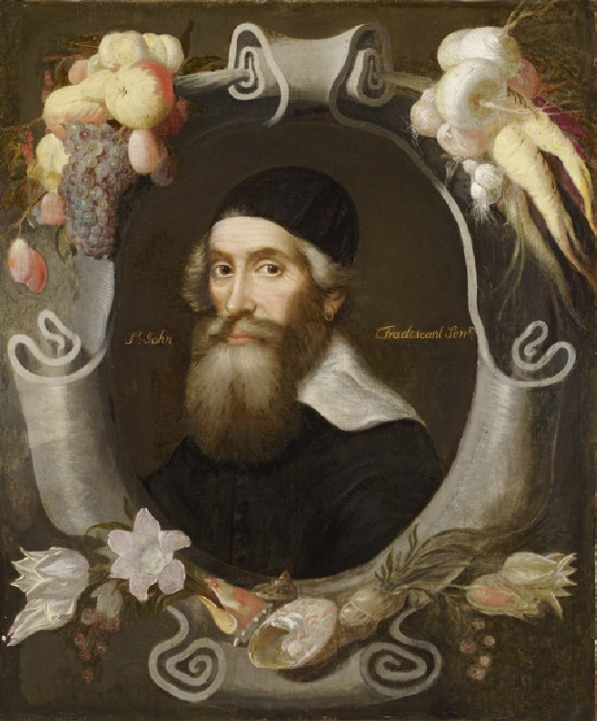|
John Tradescant The Elder
John Tradescant the Elder (; c. 1570s – 15–16 April 1638), father of John Tradescant the Younger, was an English naturalist, gardener, collector and traveller. On 18 June 1607 he married Elizabeth Day of Meopham in Kent, England. She had been baptised on 22 August 1586 and was the daughter of Jeames Day, also of Meopham. Life John Tradescant was probably born in Suffolk. He began his career as head gardener to Robert Cecil, 1st Earl of Salisbury at Hatfield House, who initiated Tradescant in travelling by sending him to the Low Countries for fruit trees in 1610/11. He was kept on by Robert's son William, to produce gardens at the family's London house, Salisbury House. He then designed gardens on the site of St Augustine's Abbey for Edward Lord Wotton in 1615––23. Later, Tradescant was gardener to the royal favourite George Villiers, 1st Duke of Buckingham, remodelling his gardens at New Hall, Essex and at Burley-on-the-Hill. John Tradescant travelled to the Nikolo-Ko ... [...More Info...] [...Related Items...] OR: [Wikipedia] [Google] [Baidu] |
Barbary Pirates The Barbary pirates, or Barbary corsairs or Ottoman c |

